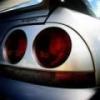Anyway of comparing torque figures from 2 different dynos?
Announcements
-
Latest Posts
-
What copper washer do you guys use on the bleeder bolts? The existing one I have I had no idea where to find it in a local store, I did buy some online but that are only 1mm thick whereas my old one is 2mm+ thick and when I put the new washer out and squeeze the top radiator hose I can hear a bit of air but not with the old one. Does this matter? The new one doesn't leak, but the inner diameter is a bit loose whereas the old one threads on the bolt.
-
Howdy all, after being out a few weeks ago on a spirited drive in my GTR I have 2 issues that oddly have appeared at the same time. Whilst accelerating quickly through the gears all of a sudden i’ve lost power at the top of third gear (below redline around 6000rpm) for no obvious reason. From that point onwards the car has been running rich on idle, won’t really rev under load without a ton of black smoke and the odd backfire, and dying as a pull up to a set of lights unless I keep the revs up around 1500rpm. In addition when shutting down the car that same night (I was 10 minutes from home) I noticed one of the turbos was significantly noisy on wind down when shutting off the engine. After letting the car cool down overnight it starts up fine, although once it gets to temp the revs start to creep up and down, the exhaust is darker than it should be and it also sounds like it’s running rich (fat note) I’ve put a new set of plugs in it - no change, the old plugs all seemed OK with two of them being somewhat richer/fueled up than the other 3 with 1 being borderline. I’ve smoked tested the intake system via the front of the Turbos, found a split vacuum hose going to the factory boost gauge sender, which I have since replaced. Also found another leak on the gasket coming off the rear turbo outlet, have also replaced this. After fixing both of these leaks - still have the running rich issue. I’ve also tried another pair of AFM’s - no change here After pulling off the front turbo intake pipes, there is obvious shaft play in the front turbo, which now hisses loudly on light revvs although I can’t see why this would make the car run funny even under idle. I’m curious to know why it’s running rich before I potentially replace/rebuild turbos. The car is completely stock <50,000kms other than an exhaust. Oil and coolant are all clear. I haven’t bothered with coil packs as it looks like they won’t be the issue due to condition of the plugs. Any help appreciated as I cry myself to sleep!
-
No probs at all. I used to love trying to dig up obscure info for those in need where possible going back 20+ years on SAU. I did have another look and couldn't come up with any closer match. I'm leaning towards those skirts in your first pic are custom fitments, cut down/extended or from another car entirely and modded to fit an R34 sedan. I would've thought someone in Japan had them and taken a photo at some stage over the last 2 decades but there's nothing. Someone out there must know surely.
-
Welcome mate. Any pics? Even with a DE I'd be well happy if I had that as a 1st car.






Recommended Posts
Create an account or sign in to comment
You need to be a member in order to leave a comment
Create an account
Sign up for a new account in our community. It's easy!
Register a new accountSign in
Already have an account? Sign in here.
Sign In Now